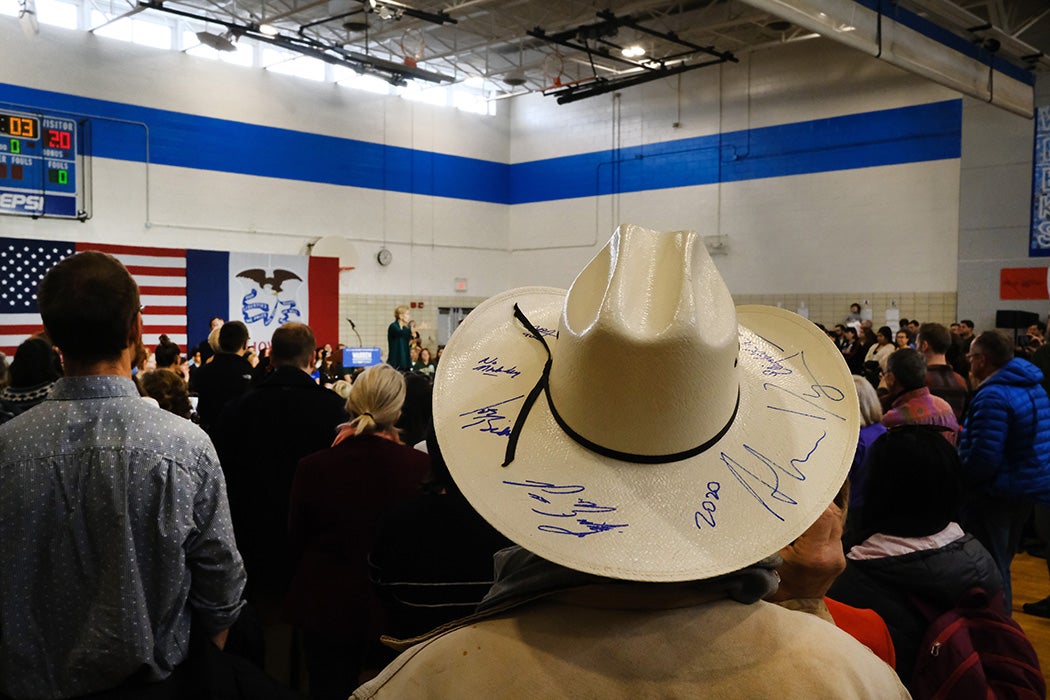For a century, the Iowa caucuses—those precinct-level paradigms of democracy, where supporters of candidates stand up to be counted—have been the opening bell of the presidential election season. While our presidential elections now seem like they last for years, the first actual voting takes place in Iowa in the winter before the national election in November.
Of course, party members who attend caucuses don’t actually vote for a candidate. They choose delegates for county conventions. The delegates will then represent candidates at the county and state conventions, and, ultimately, if all goes well for the candidate, the national party convention. This detail tends to get overshadowed by the horse race style of news reporting: who wins, who loses.
So why does Iowa get to go first, and why is it given so much weight in the quadrennial presidential contests? Well, for one thing, the state makes a point of being the earliest, even changing the date on occasion to do so in rivalry with the New Hampshire primary. Political advertising is good business, and the attention focused on the state is immense.
All this is not without controversy. The usual complaint about Iowa is that it is unrepresentative of the nation and thus holds entirely too much power in both the political imagination and the news media’s coverage.
Perceptions of Iowa’s unrepresentativeness usually boil down to its racial diversity, or lack thereof. According to the U.S. Census, the population of Iowa is 90.7 percent “white alone” (that is, not Hispanic or multiracial) compared to 76.5 percent in the country as a whole. The state is 6.2 percent Hispanic or Latino, compared to 18.3 percent for the nation. Four percent of Iowans are Black or African American, compared to 13.4 percent of all Americans.
But this isn’t the only way to think about representativeness. Political scientists Michael S. Lewis-Beck and Peverill Squire ask about the extent to which “the social, economic, and political characteristics of Iowa describe those of the nation itself.” In making what may seem like a counterintuitive argument, they don’t contest the basic demographic facts about the state: “the population of Iowa is too old and too white to represent the nation.” But this isn’t the only factor they plug into their model.
Theirs is a “descriptive representation,” taking 51 indicators of “social, cultural, economic, political, and policy activities in each of the 50 states.” Their indicators include such expected factors as race, age, education, income, and rates of employment and unemployment. But they also factor in such variables as depressive episodes, seat belt usage, health care access, beer consumption, energy consumption, median tuition at state schools, traffic fatalities, wine consumption, and “vanity license plate penetration rate” (the latter data was evidently complied by the American Association of Motor Vehicle Administrators).
Weekly Newsletter
Their conclusion is that, economically, “Iowa is unambiguously the most representative state in the country.” However, overall, the state is twelfth on their state representativeness score chart. (Kansas, Oregon, Delaware, Virginia, and North Carolina are the top five, for those keeping score.) Iowa’s lack of racial and ethnic diversity brings down the state in these ranks. All the “superior performance” on the economic and social ends of the formula can’t alter the population make-up. Nevertheless, the authors argue that the state is still a “reasonably” representative one.
“All things considered, there seems no cause to take away Iowa’s first-in-the-nation presidential selection status,” write Lewis-Beck and Squire. “If one state must hold this position then it it hard to make a better pick. Although of course not impossible, if one accepts the first-place ranking of Kansas.”
Support JSTOR Daily! Join our new membership program on Patreon today.







